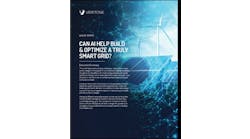A microgrid tariff proposed by Hawaiian Electric (HECO) is receiving mixed reviews as the state attempts to break new ground in creating microgrid compensation.
Now before the Hawaii Public Utilities Commission (PUC), the utility proposed the tariff in the first phase of a regulatory effort to fulfill a microgrid law (Act 200) signed in July 2018 by Governor David Ige. The law seeks to establish greater structure around microgrid interconnection and the value of microgrid services through a tariff program (Docket No. 2018-0163).
The regulatory effort before the PUC is important to the microgrid industry because ambiguity about utility regulatory treatment is one of the main impediments to microgrid development, said Richard Stuebi, senior fellow, Boston University Institute for Sustainable Energy, which had sent a note of support to the commission for its efforts.
“There is relatively little conceptual agreement on whether and how the local utility should be involved, and how the utility would be compensated for its involvement, in a prospective microgrid,” he said.
While a few precedents have been established, there is no systematic approach on how utility regulators should address microgrids, he added.
First-of-its-kind microgrid tariff
“Being the first of its kind and involving a thorough public process, the Hawaii microgrid tariff proceeding is being watched carefully by the US microgrid community, as it is likely to set a clear direction that other state regulatory authorities will evaluate,” Stuebi said.
The first phase of the docket looks only at emergency situations that would cause a microgrid to island, said Jennifer Potter, commissioner, Hawaii PUC.
“When we first started this, it was a big chunk to bite off,” she said. The first phase is fairly restrictive, and doesn’t look at grid services. And it doesn’t address microgrids interconnecting and use the utility grid as a backup power source. “That’s the next phase.”
In its filing, HECO proposed a $5/kW charge, on an annual basis, for microgrid operators who want to use the resources of the utility to coordinate dispatch and islanding, said Ashley Agcaoili, staff attorney at the Hawaii PUC. For example, for a 500 kW microgrid, the annual fee would be $2,500, she said.
Only a nod to microgrid compensation
Baird Brown, principal, eco(n)law and an attorney for the Microgrid Resources Coalition (MRC), wasn’t happy with HECO’s proposal.
“After a six-month working group process HECO submitted a tariff that was more than 50% different than what the working group discussed and added some 80 pages of additional material that had never been discussed,” he said.
The draft tariff doesn’t accomplish the goals of the effort, he added. “It’s only nod to microgrid compensation is to say that microgrids are eligible for the same programs as other resources.”
The company made little effort to ensure that its other programs permit participation by microgrids and has “given little thought” to compensating microgrids for services they are uniquely positioned to provide, he said.
“Moreover, with respect to interconnection, the company has not sought to streamline the process but instead seeks to impose additional discriminatory hurdles to microgrid interconnection and operation compared to less resilient distributed energy resource configurations,” he said.
In response, Peter Rosegg, HECO’s senior spokesman, said, “We used the working group’s (proposal) as a basis for the draft tariff filing on March 30, 2020, and included provisions and clarity to ensure safety, reliability, and rate equity to customers. In the next step, we are looking forward to further guidance and direction by the public utilities commission.“
While HECO’s filing was the first phase of the case, the goal of the overall effort, said the PUC’s Potter, is to provide fair compensation for each party in a microgrid agreement. In addition, the PUC wants to provide fair compensation for customers providing grid services. And the PUC will be looking at the different types of resiliency needed across the state.
Photo courtesy of REC Solar
As Hawaii’s regulators work on tariffs, microgrid development continues. Dependable Hawaiian Express (DHX) and REC Solar, an affiliate of Duke Energy, announced this week that they have completed a solar microgrid to the Hawaiian freight company. The project includes 360 solar panels on the 76,000-square-foot (7,061 square meters) roof of DHX’s new warehouse and distribution center in Honolulu, and 222 kWh of battery energy storage, and other equipment. A Schneider Electric Energy Control Center manages and controls the microgrid.
Power outages on the Big Island due to hurricanes and other issues prompted the state legislature to ask the PUC to create this docket, in an effort to ensure utilities implement microgrid tariffs, she noted.
Next step in proceeding
The next step, after the first phase, is to decide how to allow microgrids to operate in island mode. “Further down the road, we’ll focus on grid services and microgrids working in a transactive way to provide energy or ancillary services. This is a three phase approach,” said Potter.
Potter would like to see the commission finish the efforts to address microgrids that can island by the end of year. “We will tackle grid services next year,” she added.
Will COVID-19 impact microgrid policy progress? Join the discussion June 1 at the free Microgrid Knowledge Virtual Conference.
Quantifying the value of resilience will be a challenge, Potter said. “A large portion of the microgrid value would come from resilience. We have not quantified what that value will be, not sure when that will happen,” she added.
Part of the challenge is that the value of resilience depends on the situation. “In a natural disaster, the value is high. Do you normalize that across a year?” she asked. “It will be interesting to figure that out.”
Stuebi said that Hawaii’s decisions may be adopted by regulators in other states, which would provide a degree of standardization to microgrid development in the US.
Track news about about the Hawaii microgrid tariff proceeding. Subscribe to the free Microgrid Knowledge newsletter.








